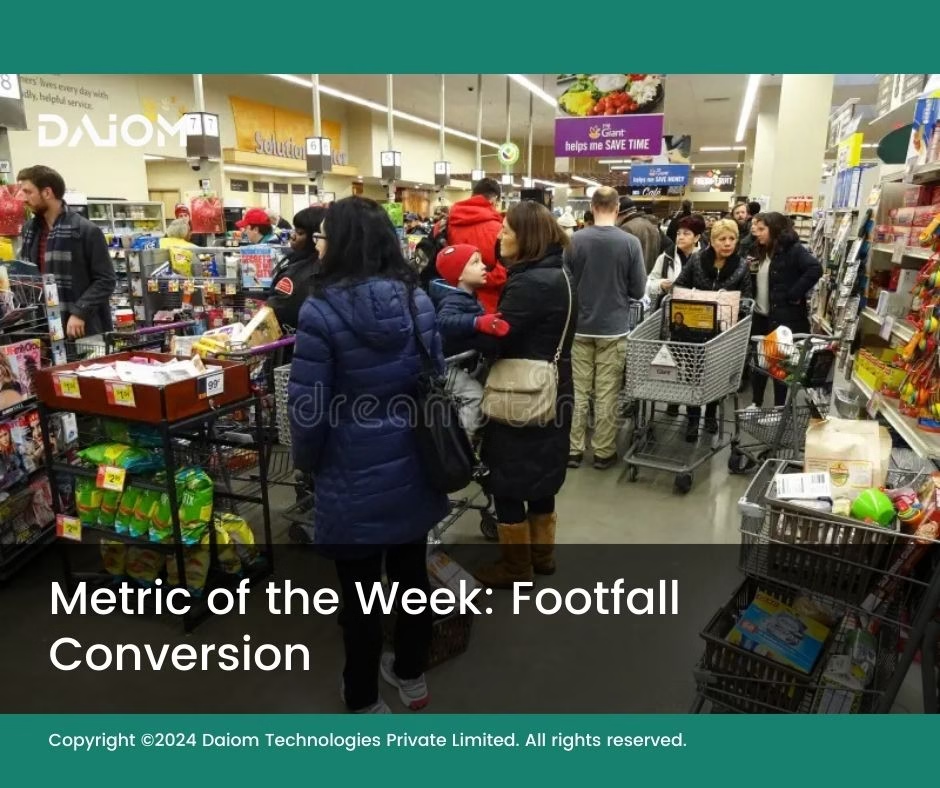One of the biggest challenges for brands in today’s retail scenario is effectively increasing sales. While 80% of purchases still happen in physical stores, many brands succeed in understanding their online sales channels but often struggle when it comes to driving higher sales at physical store locations.
Store sales are not just about footfall—they are about conversion. Every time there is a drop in sales, brands often assume it’s due to lower footfall.
But managing footfall is an equation, and the most controllable part of that equation is footfall conversion.
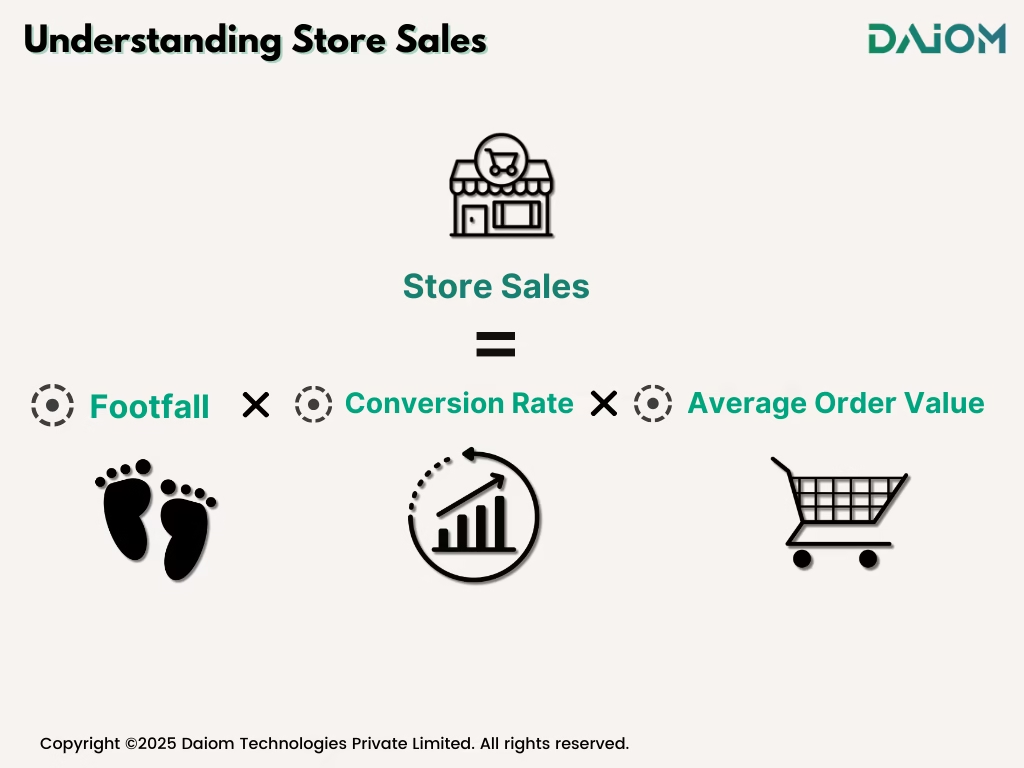
Read more – How To Scale Up Your Store Sales By Increasing Footfall?
As 95% of customers compare online and offline options before buying, footfall conversion is becoming an important factor in driving in store sales.
This metric is only becoming more and more important due to the sheer number of ways customers can now discover, engage with and buy from you.
The key to successful retail isn't just attracting customers—it's creating an experience that keeps them coming back.
Doug Stephens, Retail Industry Futurist
Table of Contents
1. What is Footfall Conversion?
Footfall conversion is a metric that measures how many visitors who enter a physical store actually make a purchase. It represents the percentage of foot traffic that gets turned into sales, helping brands understand how effectively they are engaging with customers and influencing their buying decisions.
Conversion rates can vary significantly across industries and even individual stores. Typically, the footfall conversion rate ranges from 10% to 70%.
For instance, fashion stores may experience conversion rates around 20% to 30%, while high-intent purchases like jewelry or electronics may have higher rates due to the nature of the products and the customer’s buying intent.
Achieving a 100% conversion rate is rare, as not all store visitors are ready to buy. Some may only be browsing or window shopping. However, consistently tracking and optimizing this metric can help brands improve their in-store experience and sales strategies, even if they cannot achieve a perfect conversion rate.
2. Why Is Footfall Conversion Important For Brands?
By tracking footfall conversion, brands can gain valuable insights to improve both the customer experience and their bottom line.
Measuring store conversion is similar to tracking an online funnel—starting with acquisition (footfall), moving to behavior (browsing and engagement), and finally, conversion (purchase).
By focusing on conversion, brands can make the most of their existing footfall and drive higher sales without solely relying on increasing store visitors.
Read more – How To Drive Store Footfall In An Omnichannel Digital World?
Footfall conversion helps them tackle some big challenges like:
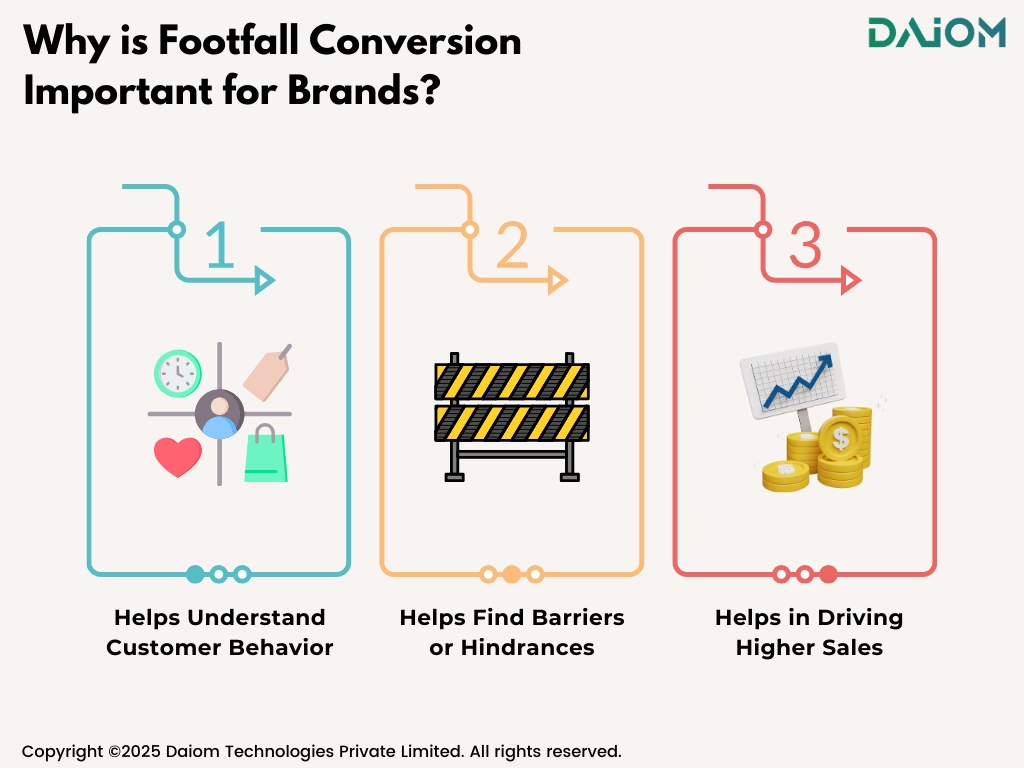
- Understanding Customer Behavior: It shows how well stores are turning interest into sales. If lots of people are coming in but not buying anything, that’s a disadvantage!
- Finding Barriers: Sometimes customers want to buy but face obstacles like confusing layouts or unhelpful staff. Footfall conversion can help identify these issues.
- Drive Higher Sales: If a store runs a special sale and sees more purchases, they know their marketing efforts are working!
3. How to Calculate Footfall Conversion?
One of the biggest challenges in conversion tracking is inaccurate footfall measurement. Many stores still rely on manual counting, which can lead to errors.
Digital methods, such as camera-based tracking, offer a more precise way to measure footfall and understand customer behavior.
All you need are two key pieces of information: the number of people who made a purchase (transactions) and the total number of visitors to the store (footfall).
Here’s the simple formula:
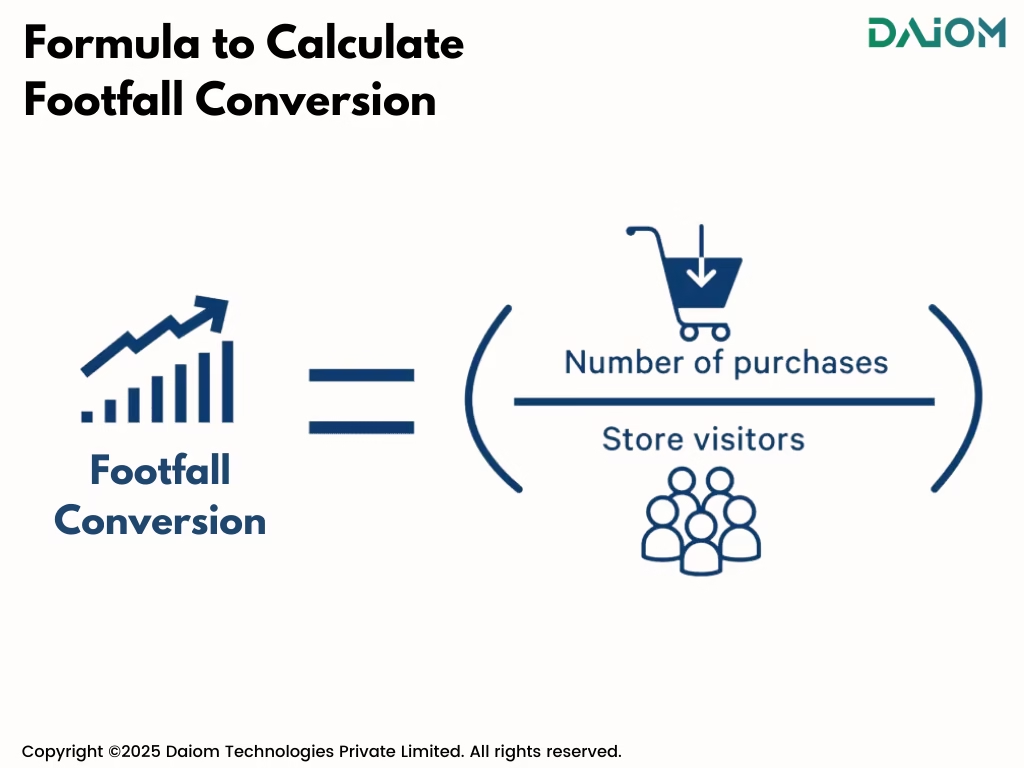
Footfall Conversion Rate = (Number of Transactions ÷ Total Footfall) x 100
This quick calculation can give you a clear picture of how effectively your store is converting visitors into buyers, helping you make informed decisions to boost sales!
For example, if 100 people visit a store and 25 of them make a purchase, the footfall conversion rate is 25%. This number helps store owners measure how effectively they’re turning visitors into customers.
So, your footfall conversion rate would be 25%.
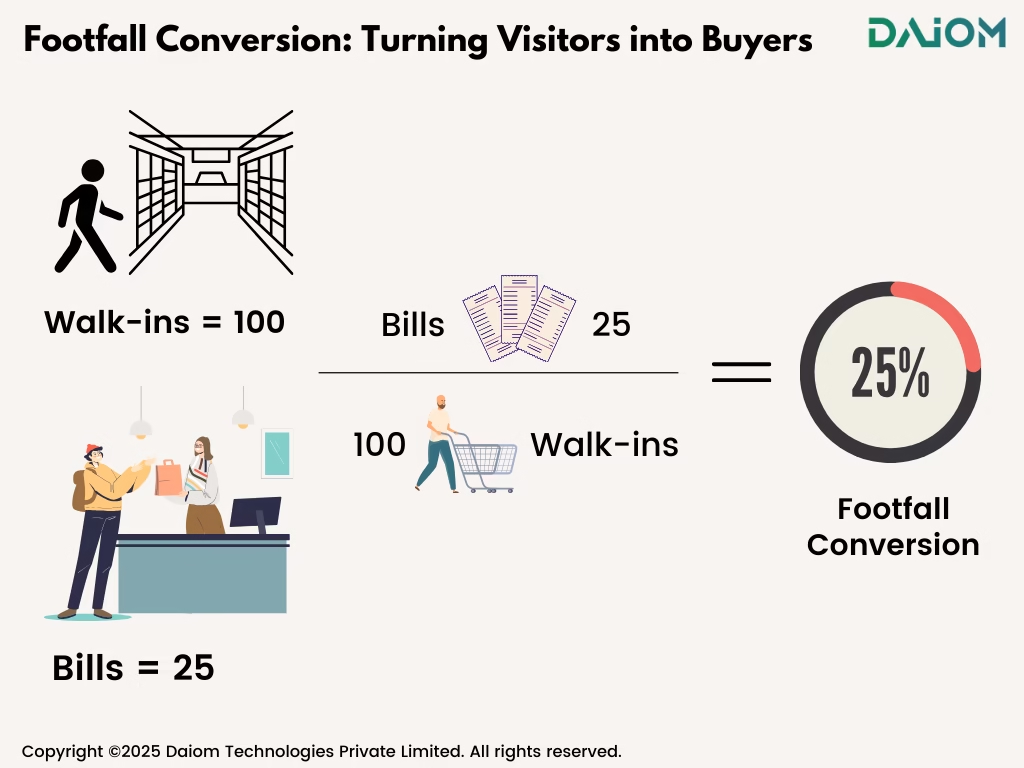
3.1 The Concept of Group Footfall
Footfall conversion can sometimes be misleading because not every visitor is an individual shopper.
A family, a couple, or a group of friends may visit together but make only one purchase. This is where group footfall conversion comes in—it tracks groups rather than individuals to provide a more realistic conversion rate.
4. Why Footfall Conversion Matters More Than Footfall?
While footfall depends on external factors like weather, marketing campaigns, or events, conversion is something brands can actively influence.
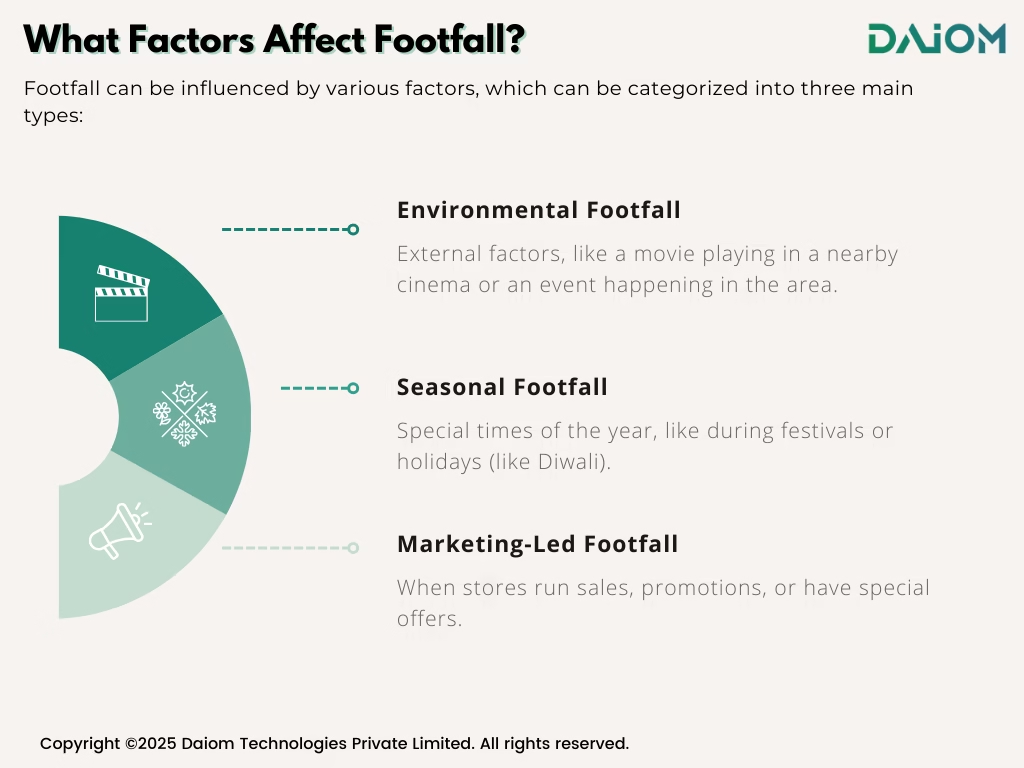
Some key factors affecting conversion include:
- Store layout and experience – A well-organized store encourages more purchases.
- Staff availability and behavior – Engaged and helpful staff can improve conversion rates.
- Checkout and trial room experience – Long wait times can lead to lost sales.
5. Common Mistakes Brands Make While Measuring Footfall
While measuring footfall conversion is incredibly valuable, many brands make mistakes that can lead to misleading results. Getting the numbers right is key to making better decisions and improving sales strategies.
Here are some common mistakes to watch out for:
- Bad Data Quality: If foot traffic counts are wrong, the conversion rate will be too! Make sure you’re counting visitors accurately.
- Ignoring External Factors: Seasonal trends or special events can affect foot traffic. Don’t forget to consider these when analyzing your data.
- Not Segmenting Data: Looking at overall numbers is good, but breaking down data by customer groups can reveal more insights.
6. Benchmarks for Different Industries
When it comes to footfall conversion rates, it’s important to recognize that benchmarks can vary greatly depending on your store type, industry, location, and even customer demographics.
But here’s what we know from experience:
- Industry Benchmarks: Conversion rates vary by industry. For example, fashion retail typically sees around 20% conversion, whereas high-intent purchases like jewelry have much higher rates.
- Beyond Conversion Rate: While footfall conversion is crucial, it’s just one piece of the puzzle. Don’t forget to also track metrics like Average Order Value (AOV), total footfall, and Customer Acquisition Cost (CAC)—each plays a vital role in measuring retail success.
- Focus on Your Own Progress: Rather than fixating on industry averages, the real key is tracking your own conversion rate and making consistent improvements over time. Every store has its own unique challenges and opportunities, so it’s important to focus on your specific goals and growth.
7. How to Boost Footfall Conversion?
Improving your footfall conversion rate is about creating an environment where customers feel welcome and motivated to make a purchase.
Here are some proven strategies to enhance your store’s performance:
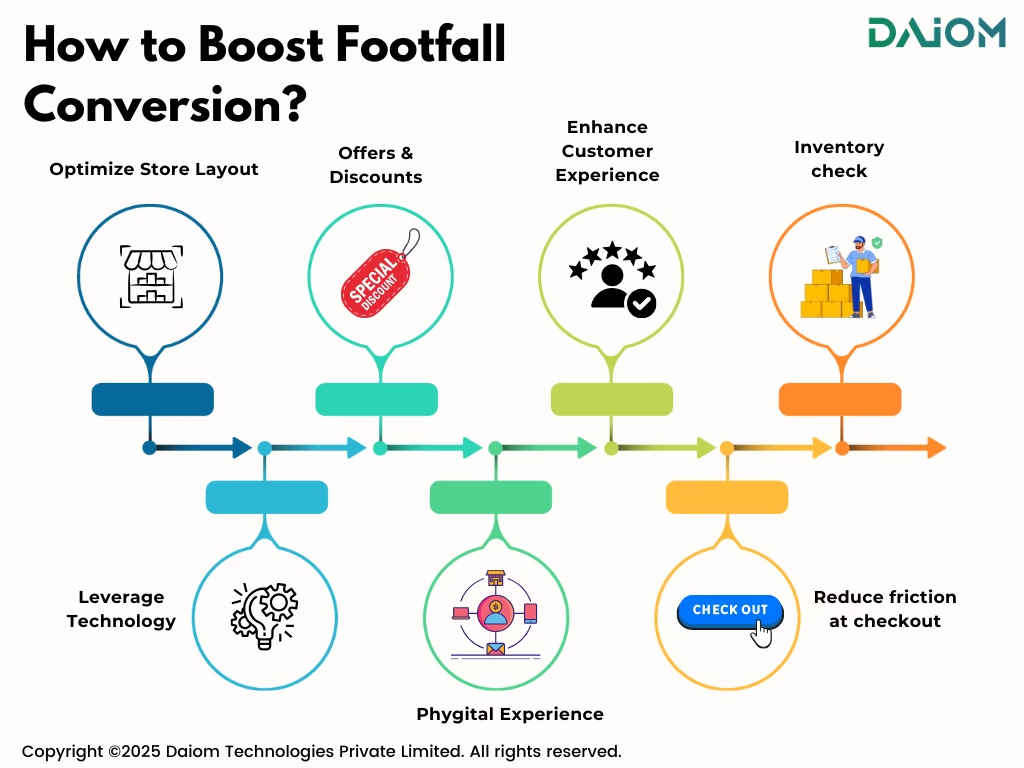
- Enhance Customer Experience: Train your staff to be friendly and helpful. A warm welcome can go a long way! Sales associates can provide that personal touch and guide customers to products in-store, as well as help them find products they may have browsed online, going beyond simple customer service.
- Inventory check: Products being out of stock is a key element that can negatively impact conversions.
- Optimize Store Layout: Make sure your store is easy to navigate and highlights popular products.
- Targeted Promotions: Use data to create special offers that appeal directly to your customers’ interests.
- Leverage Technology: Consider using apps or loyalty programs that engage customers before they even enter the store.
- Phygital Experience: Combine the physical and digital experience by offering interactive screens, apps, or digital product information to enhance in-store engagement.
- Reduce friction at checkout: Speed up the checkout process with efficient systems and staff to avoid long lines and frustration.
Retail is not about selling products; it's about creating experiences that customers want to come back to.
Steve Jobs
8. Conclusion
Footfall conversion is an essential KPI that helps retailers understand how well they turn visitors into buyers.
By calculating this metric and analyzing its implications, businesses can make informed decisions that lead to improved customer experiences and increased sales.
Footfall and conversion rate are closely connected in retail. While a higher footfall creates a greater potential for sales, it doesn’t guarantee a higher conversion rate.
A store may have many visitors, but if they don’t make purchases, sales won’t increase. Conversely, a store with lower footfall might have a higher conversion rate if it effectively engages customers and encourages them to buy.
Therefore, retailers should focus on increasing both footfall and conversion rate to maximize sales.
Subscribe to our NEWSLETTER!


